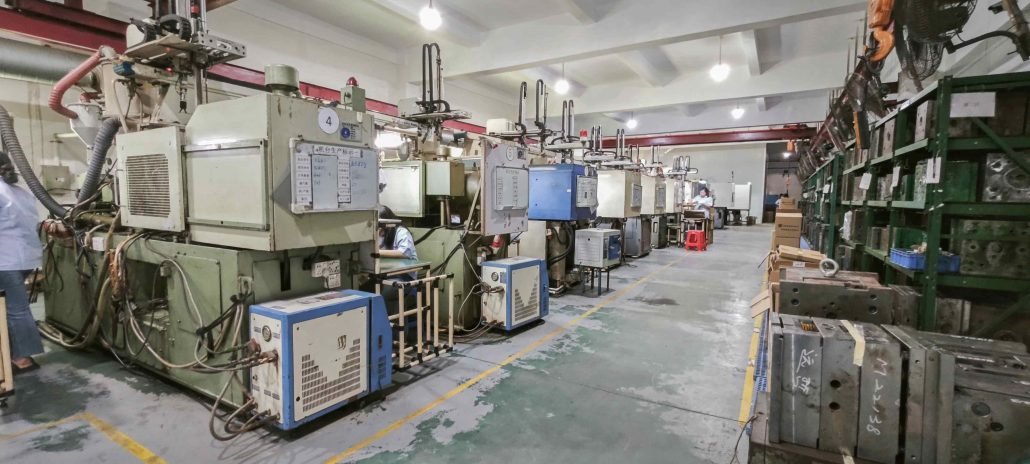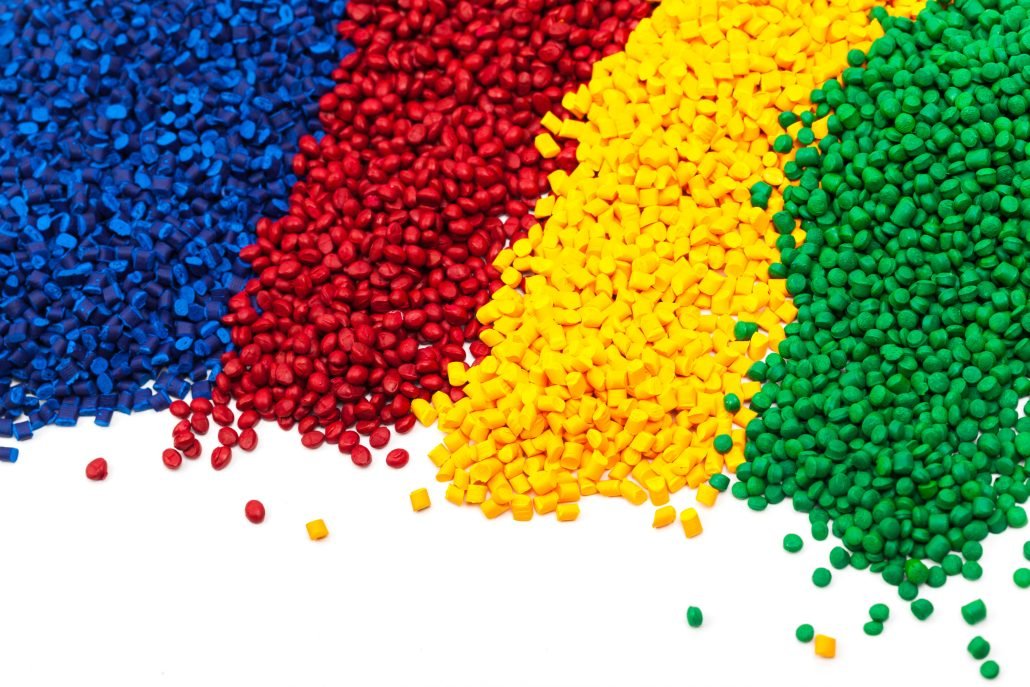If you are unfamiliar with the injection molding process, there is no need to worry, it is a process of making items based on molds. In this method, plastic is usually heated to a liquid state, injected into the mold, and then cooled to obtain the desired shape. This process can be used to produce various plastic products, such as plastic parts, plastic containers, plastic toys, etc.
This article will introduce common plastic materials in injection molding process, as well as their applications and characteristics
Plastic type Overview
There are a variety of plastic materials on the market, which can be divided into two categories: thermoplastic and thermosetting. Thermoplastics refer to plastics that can be changed into a fluid at a certain temperature and pressure and can be used many times under the same conditions after cooling. Thermosetting plastics refer to plastics that cannot be melted again after solidifying during heating. In the injection molding process, thermoplastics are mainly used.

Plastics can be divided into the following categories according to different classification characteristics:
1.Thermoplastic is a plastic material that can be repeatedly heated and cooled without changing its properties. Common thermoplastics are polyethylene (PE), polypropylene (PP), polyvinyl chloride (PVC), polystyrene (PS), polycarbonate (PC) and so on.
2.Thermosetting plastics are plastic materials that do not soften or flow easily once cured, such as epoxy resins and phenolic resins.
3.An elastomer is a plastic material with high elasticity and strength, such as polyurethane (PU).
Different plastics have different properties, such as:
1.Temperature resistance
2.Resist tension
3.Chemical corrosion resistance
4.Machinability
5.Recyclability, etc.
Plastics used in plastic injection molding
There are a wide variety of common injection molding plastics, each with its own characteristics, and they are widely used in different fields. The following is a list of commonly used injection molding plastic materials and their common applications:
1.Polypropylene (PP): Containers, household products, and automotive components.
2.High density polyethylene (HDPE): bottles, pipes, plastic bags.
3.Polystyrene (PS): cups, tableware, electronic product shells.
4.Polyvinyl alcohol (PVA): soluble packaging materials, medical supplies, fibers.
5.Polycarbonate (PC): Glasses, bottles, CDs.
6.Nylon (PA): Machine element, electronic accessories, textiles.
7.Polyvinyl chloride (PVC): Pipeline, wire insulation layer, floor.
8.Polymethyl methacrylate (PMMA): transparent cup, headlight cover, display.
9.Polystyrene butadiene styrene block copolymer (SBS): sole, sealing element, and shockproof material.
10.Polystyrene ethylene butadiene styrene block copolymers (SEBS): rubber products, plastic parts, medical supplies.
11.Polyester (PET): Bottles, fibers, food packaging.
12.Polyacrylic acid vinyl ester (EVA): insoles, swimming boards, packaging materials.
13.Polyphenylene sulfide (PBT): electrical parts, auto parts, household appliance shells.
14.Polyether ketone (PEEK): high-temperature parts, aerospace components, medical devices.
Comparing the advantages and disadvantages of different plastics
Different injection molding materials have different properties. Here is a brief comparison of some commonly used materials:

1.Polypropylene (PP)
Advantages:
1.Good processability, suitable for injection molding of complex shapes.
2.Good chemical corrosion resistance, suitable for use in various chemical environments.
3.Low density, lightweight design option.
Disadvantages:
1.Low rigidity, not suitable for applications that require high strength and rigidity.
2.Poor heat resistance and susceptibility to thermal deformation.
3.Easily affected by oxidation, not suitable for long-term exposure to high-temperature environments.
2.High density polyethylene (HDPE)
Advantages:
1.Good chemical corrosion resistance, suitable for the storage and transportation of various chemicals.
2.High rigidity and strength, able to withstand large loads.
3.Excellent impact resistance, suitable for manufacturing durable components.
Disadvantages:
1.The melt viscosity is high, and higher temperatures and pressures are required during injection molding.
2.Low transparency, not suitable for applications that require high transparency.
3.The low temperature of thermal deformation limits its use in high-temperature environments.
3.Polystyrene (PS)
Advantages:
1.High transparency, capable of manufacturing transparent products.
2.The surface is smooth and has a good appearance effect.
3.Relatively low cost, widely used in consumer goods and packaging industries.
Disadvantages:
1.High brittleness, prone to fracture and damage.
2.Poor heat resistance, not suitable for high-temperature environments.
3.Easy to be corroded by chemical solvents and not resistant to certain solvents.
4.Polyvinyl alcohol (PVA)
Advantages:
1.Excellent solubility and adhesive strength, suitable for applications such as preparing adhesives, films, and fibers.
2.Degradability, environmentally friendly, with minimal impact on the environment.
3.Good transparency and optical performance, suitable for the preparation of optical products and packaging materials.
Disadvantages:
Sensitive to humidity and moisture, easy to absorb moisture and dissolve, reducing physical properties.
Low temperature resistance, easy to soften and melt.
Poor mechanical performance, low strength and rigidity.
5.Polycarbonate (PC)
Advantages:
1.Excellent impact resistance and high impact resistance.
2.Excellent transparency and optical performance, similar to glass, suitable for preparing transparent products.
3.Good heat resistance, able to maintain stability in high-temperature environments.
Disadvantages:
1.Easy to scratch, low surface hardness, requiring additional protection.
2.Sensitive to certain chemicals and susceptible to chemical attack.
3.The cost is high and relatively expensive compared to other plastic materials.
6.Nylon (PA)
Advantages:
1.Excellent mechanical properties, high strength and rigidity, and good wear resistance.
2.Good chemical resistance, able to resist the erosion of various chemicals.
3.Good heat resistance, able to maintain stability at higher temperatures.
Disadvantages:
1.High water absorption, easy to absorb moisture, easy to cause size changes and performance degradation.
2.Injection molding is difficult and requires high temperature and pressure conditions.
3.Poor weather resistance and susceptibility to UV and oxidation.
7.Polyvinyl chloride (PVC)
Advantages:
1.Excellent chemical resistance, able to resist the erosion of various chemicals.
2.Good electrical insulation performance, suitable for electrical and electronic applications.
3.Good weather resistance, able to maintain long-term stability in outdoor environments.
Disadvantages:
1.PVC containing Plasticizer may release harmful substances and pose potential risks to the environment and health.
2.Injection molding is difficult and requires high temperature and pressure conditions.
3.High opacity, not suitable for applications that require high transparency.
8.Methyl polyacrylate (PMMA)
Advantages:
1.Excellent transparency and optical performance, similar to glass, widely used in the fields of optics and decoration.
2.Good weather resistance, able to maintain transparency and appearance in outdoor environments for a long time.
3.Good chemical resistance, able to resist the erosion of various chemicals.
Disadvantages:
1.Easy to scratch, low surface hardness, requiring additional protective measures.
2.Low heat resistance, not suitable for high-temperature environments.
3.The cost is high and relatively expensive compared to other plastic materials.
9.Polystyrene butadiene styrene block copolymer (SBS):
Advantages:
1.Excellent elasticity and bending performance, suitable for manufacturing elastomers and elastic components.
2.Good cold resistance, able to maintain flexibility and elasticity at low temperatures.
3.Good shock absorption performance, able to absorb shock and vibration.
Disadvantages:
1.Poor chemical corrosion resistance and sensitivity to certain solvents and chemicals.
2.Poor heat resistance, easy to soften and deform.
3.The mechanical properties are relatively low, and the strength and rigidity are not as good as other plastic materials.
10.Polystyrene ethylene butadiene styrene block copolymer (SEBS)
Advantages:
1.Excellent elasticity and bending performance, with good resilience.
2.Good weather resistance, able to maintain stability and appearance in outdoor environments for a long time.
3.Good chemical resistance, able to resist the erosion of some chemicals.
Disadvantages:
1.Low heat resistance, not suitable for high-temperature environments.
2.Poor wear resistance, prone to wear and surface damage.
3.The cost is high and relatively expensive compared to other elastic materials.
11.Polyester (PET)
Advantages:
1.Good mechanical properties, high strength and rigidity.
2.Good heat resistance, able to maintain stability at higher temperatures.
3.Excellent chemical resistance and good resistance to chemicals such as acids and alkalis.
Disadvantages:
1.Easy to deform due to heat and sensitive to temperature.
2.Not resistant to solvents and susceptible to dissolution and erosion by certain solvents.
3.High opacity, not suitable for applications that require high transparency.
12.Vinyl polyacrylate (EVA)
Advantages:
1.Good flexibility and bending performance, suitable for manufacturing soft products and components.
2.Good cold resistance, able to maintain flexibility and elasticity at low temperatures.
3.Good chemical resistance, able to resist the erosion of some chemicals.
Disadvantages:
1.Poor heat resistance, easy to soften and deform.
2.Poor wear resistance, susceptible to wear and surface damage.
3.The mechanical properties are relatively low, and the strength and rigidity are not as good as other plastic materials.
13.Polyphenylene sulfide (PBT)
Advantages:
1.Excellent heat resistance, able to maintain stability in high-temperature environments.
2.Good mechanical properties, high strength and rigidity.
3.Good chemical resistance and good resistance to chemicals such as acids and alkalis.
Disadvantages:
1.High opacity, not suitable for applications that require high transparency.
2.Easy to absorb moisture, sensitive to humidity, easy to cause size changes and performance degradation.
3.The cost is high and relatively expensive compared to other plastic materials.
14.Polyether ketone (PEEK)
Advantages:
1.Excellent high-temperature resistance, able to maintain stability at extremely high temperatures.
2.Excellent mechanical properties, high strength, rigidity, and wear resistance.
3.Good chemical resistance, able to resist the erosion of various chemicals.
Disadvantages:
1.The cost is high and relatively expensive compared to other plastic materials.
2.Injection molding is difficult and requires higher temperatures and pressures.
3.High viscosity, with high requirements for injection molding equipment.
The above data is only an overview of some advantages and disadvantages of materials. Please consider other factors based on actual applications when selecting suitable materials
How to choose the appropriate plastic
In the injection molding process, we need to select the characteristics of plastic materials based on needs, such as strength, stiffness, heat resistance, and chemical resistance. Different plastic materials are suitable for different fields, so when choosing plastic materials, we need to make appropriate choices based on the products to be manufactured.
We are a professional company in the field of injection molding and hope to receive expert advice. At Longsheng Technology, we can provide you with a deeper understanding of plastics and help you choose the plastic material that best suits your product needs. We have our own processing factory and advanced technical equipment, which can provide customers with high-quality and high-quality injection molding products.
-1030x579.jpg)
conclusion
After understanding the different types of injection molding materials mentioned above, you will face many choices. It would be very helpful to seek expert advice before selecting the appropriate plastic for your project. No matter what type of plastic injection molding parts you need to manufacture, our design and production experts at Longsheng Technology are always ready to help you make the right choice. At the same time, we will also provide you with design feedback (DFM) for manufacturing while quoting.
Please contact us immediately and upload your injection molding design to us. We will provide you with a quotation within 24 hours.


